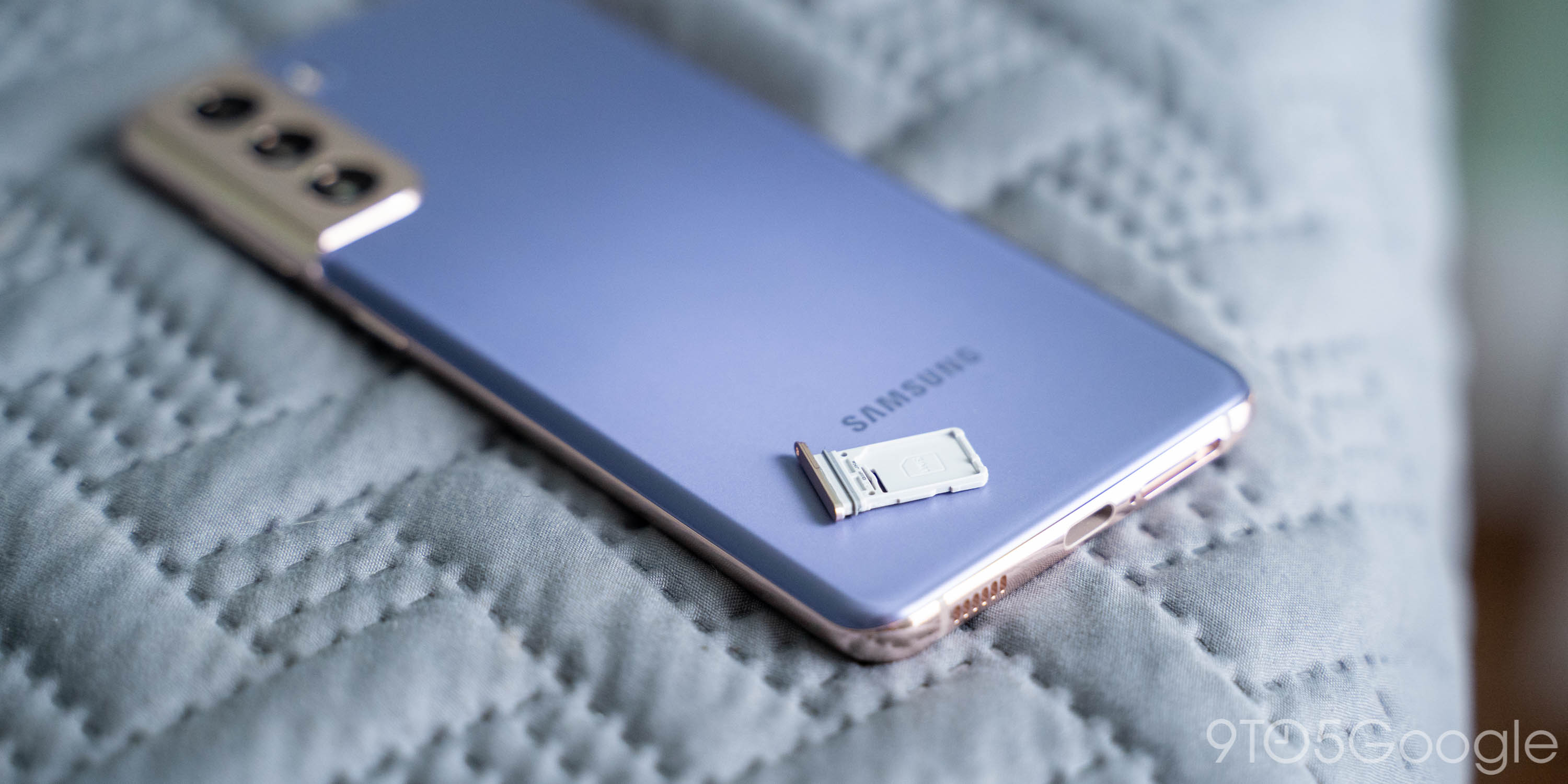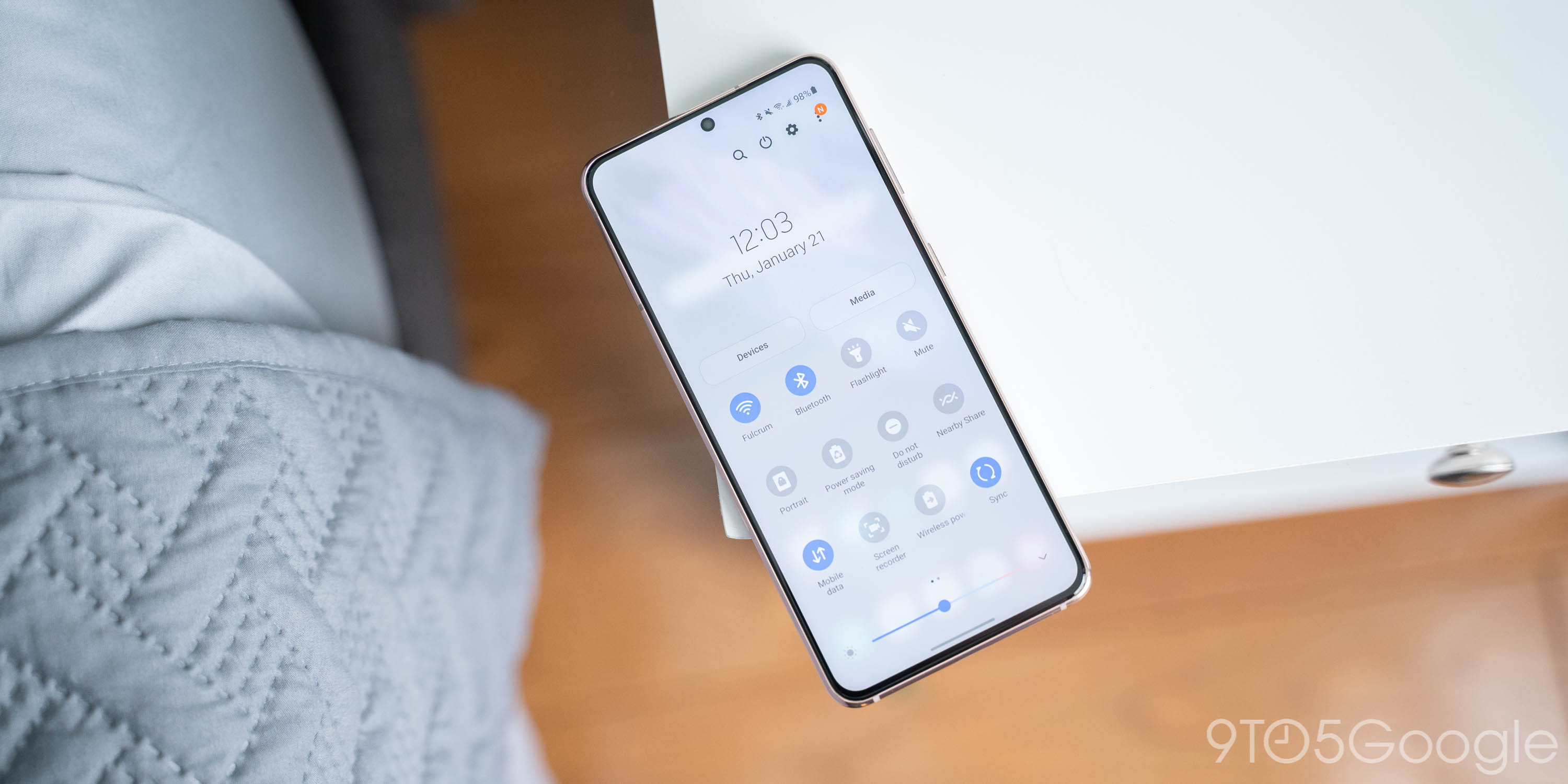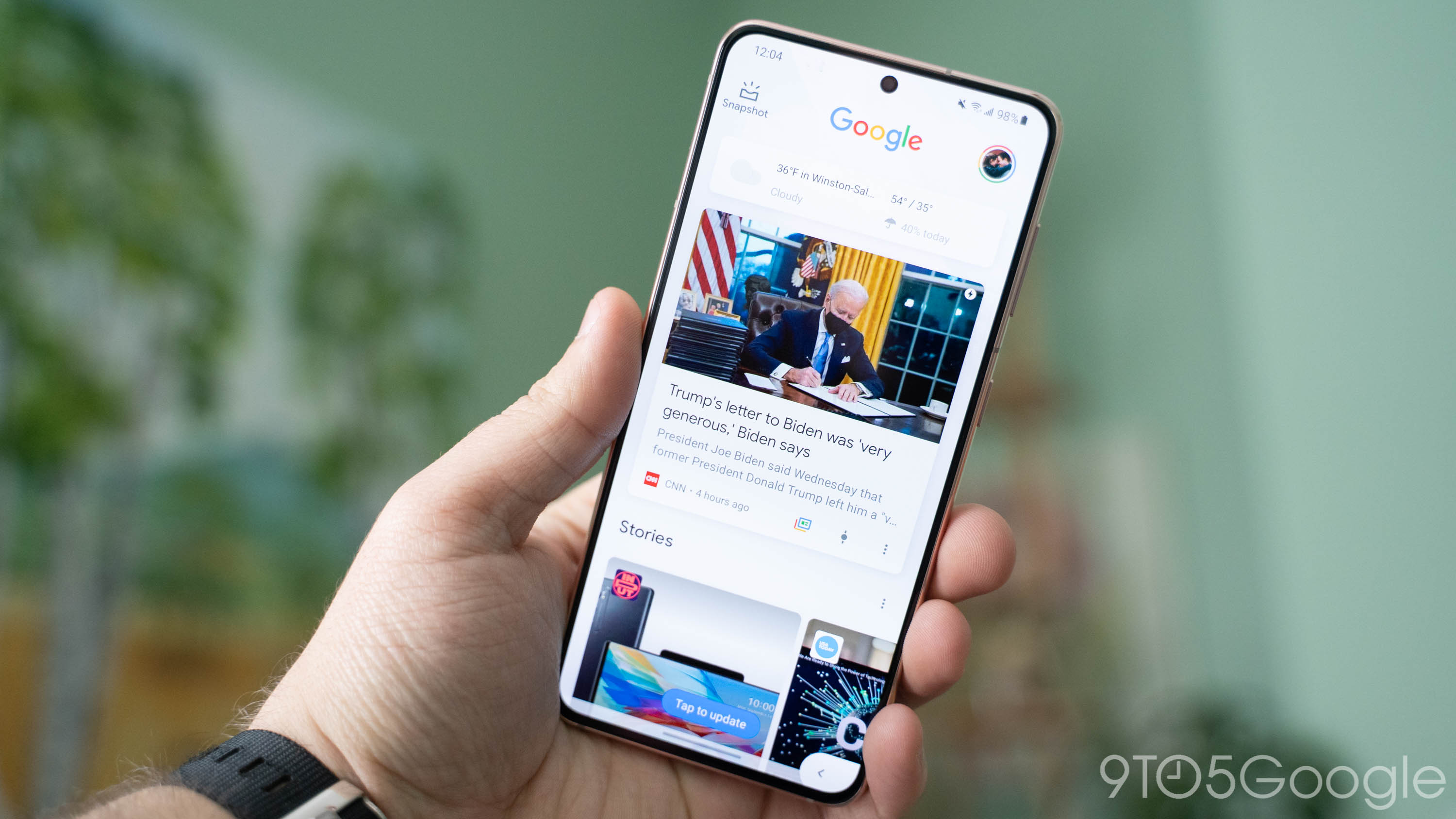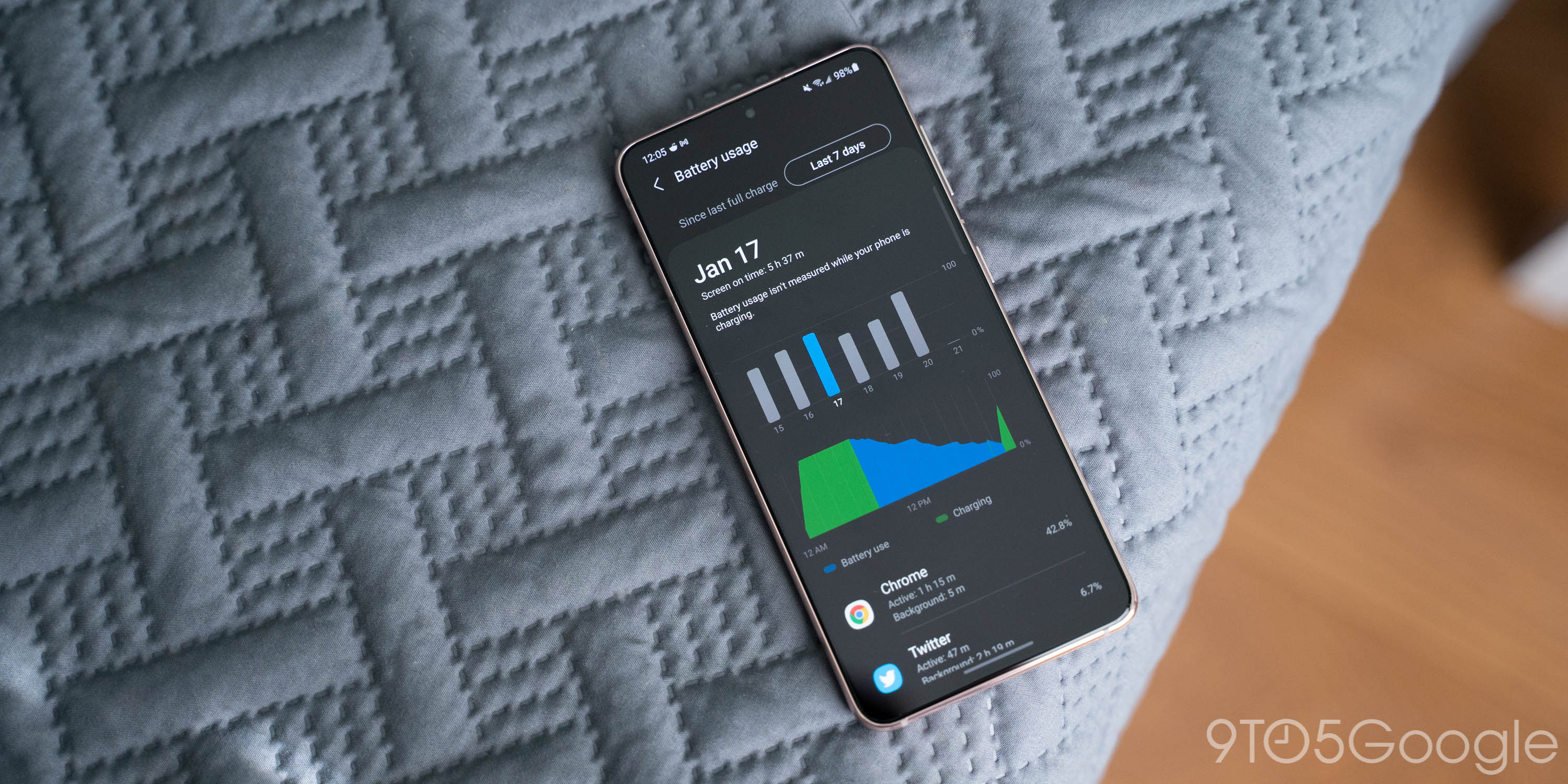Samsung introduced the Galaxy S20 series around a year ago. Even while they ultimately turned out to be fantastic cellphones, they had issues. Samsung’s pricing was out of control, and its products just didn’t offer enough value. With the Galaxy S21 series, Samsung is now reversing a lot of that by making changes to lower the price by $200. It’s good that Samsung is acknowledging its error.
Note: The Galaxy S21 was the subject of this review, which was first published on January 22. After using the Galaxy S21 for several weeks, we’ve included an addendum containing information on that smartphone.
Hardware: A Step Backward in Multiple Ways You likely only consider improvements when considering new flagship smartphones, whether they are from Samsung or another manufacturer. Unfortunately, the Galaxy S21 does suffer from a few shortcomings when compared to the Galaxy S20.
These price reductions for the base Galaxy S21 include taking away the microSD card port, lowering the maximum screen resolution to to 1080p, lowering the RAM to 8GB, and switching back to plastic for the glass. Many people view these as negative factors, but in my opinion, Samsung made the correct adjustments to reduce the price of this gadget by $200.
Let’s talk about the plastic back since we’re already talking about hardware. The Galaxy S21 features a glasstic back, just like the Galaxy Note 20 and Galaxy S20 FE from the previous year. Even though you can clearly tell it’s plastic, I think it still has a pleasant feel to it. The construction is strong and durable, and the matte finish is excellent at obscuring fingerprints. Plastic also provides additional advantages. Despite potentially being simpler to scratch, it won’t break. The Galaxy S21 feels a little more at ease in the hand and is less noticeable in the pocket because to its reduced weight.

The buttons along the right side are well-spaced, tactile, and clicky while yet being simple to press. The sleek metal frame has a good appearance and, surprisingly, doesn’t attract too many fingerprints. The vast amount of antenna lines—six on each of the four sides of the phone—was one peculiarity I observed with the frame. That’s greater than any of Samsung’s 2020 flagships, and you can really see because of the spacing and color. However, this undoubtedly relates to 5G, and I’d much rather have this than an random little window cut into the frame’s side.
This is relatively normal fare in terms of ports. A SIM card slot, a USB-C port for charging, a speaker grill along the bottom that is covered by the earpiece, and other features are also present. However, as previously indicated, that slot does not also have space for a microSD card. Additionally, the S21 has two microphones on the top and one on the bottom, directly across from the SIM slot.

ADDING SOME LIFE TO TRAGIC DESIGNS The design of the Galaxy S20 series was one of my main gripes. Samsung wasn’t doing anything really unique, and the colors were somewhat dull. But thankfully, the Galaxy S21 takes things to the next level. The Phantom series’ colors are a little more eye-catching than previous series’, particularly the Phantom Purple, which features two colors: one for the body and another for the camera module and frame.
One of the Galaxy S21’s most distinctive design features is perhaps the camera module. It almost smoothly blends into the frame rather than just being a protruding piece of glass or metal sticking out of the back. Although it would seem like a durability issue, you can actually see the little gap that shields the camera hardware from damage in the event of a fall. Particularly when it comes in this two-tone design, it’s a really great aesthetic that I’ve grown to really appreciate. It makes the gray, silver, and even the pink versions of the phone less intriguing, thus I wish Samsung had focused entirely on the two colors for all varieties.

Overall, this is hardly a revolutionary change in smartphone design, but it is a pleasant improvement that demonstrates some concepts haven’t yet been thoroughly explored. Additionally, I expect to see this design on more Samsung products in 2021.
DISPLAY | THE EVIL IS FINALLY GONE I deemed the Galaxy S20 and S20displays ‘s great last year, and the Galaxy S21’s display is pretty much the same. The panel itself is just 1080p now rather than 1440p, but it is still very sharp and has great color and contrast. The 120Hz refresh rate is now adjustable rather than static, and the brightness is also fantastic. As a result, the S21 can conserve a little battery power while scrolling or playing games. Like Samsung’s 2020 smartphones, the S21’s refresh rate is truly amazing. If this is your first device with the functionality, you’ll notice the distinction between 60Hz and 120Hz right away. Additionally, this year Samsung left it on by default!

What else is excellent about this? The hole-punch selfie camera is still in the same good location and size as last year. The display has finally abandoned the curve totally, which is the really interesting development. That’s correct: Samsung has unveiled a flagship phone for the first time in six years that doesn’t stupidly curve the display’s edges for aesthetic reasons. This has the advantage of preventing further display glare, improving side clarity, and making screen protector installation considerably simpler. This is a triumph for regular individuals who just want to use their phones. I’m relieved that curved screens are finally being phased out because they were essentially user-hostile in every manner.
One thing I noticed right away was that Samsung has taken the screen protector that came pre-installed on the Galaxy S10 and S20 series out of the S21 lineup. Why? Although that doesn’t really explain why the S21 comes with it in other places, Samsung informed me that it was confusing some buyers. There may be more to the tale, but I don’t think Samsung will confirm it directly. In any event, I’m personally disappointed to see its removed because it was a simple way to cause lasting harm. My S21 somehow acquired a scratch in less than a day, which only made the agony worse.

ONE UI 3 BRINGS CONTINUED IMPROVEMENTS, BUT IT’S NOT PERFECT SOFTWARE ANDAMP; PERFORMANCE I’ll give Samsung credit for their software if there is anything. Samsung has made enormous strides in the previous few years in terms of usability and long-term software support, while the business was once the laughingstock of the smartphone market. Samsung introduces One UI 3.1 with the Galaxy S21, and it’s excellent.

Since One UI first launched a few years ago, One UI 3 represents the most significant advancement of Samsung’s skin. Based on Android 11, it updates the general design by adding more transparent components and reducing some clutter. Although some users might not like the options, they are secure. Personally, I like the design as a whole, and the extra features like Wireless DeX and other customization options are welcome as well, especially since they don’t interfere with the basic Android functionality and are only offered if necessary.
Naturally, Samsung software wouldn’t exist if there weren’t a few minor issues. Still present and still largely ineffective as a voice assistant, Bixby is unworthy of a default shortcut on the power button. I don’t like how Samsung changed several of its menus either. For instance, the battery menu now requires some taps and swipes to reveal practically no relevant information, making it difficult to determine what is draining your energy or how long you used your phone that day.
The good news is that Samsung is getting even closer to offering a pure Android experience this year. For instance, Google Discover replaces Samsung’s sluggish, ad-filled, and largely useless Free leftmost panel on the homescreen. You can select between the two, but in my opinion, it is clear which is superior. In some areas, Google Messages comes pre-installed with its clean design and global RCS rollout. These options are better than Samsung’s simply because they are Google products; it is obvious that using them rather than starting from scratch is easier for Samsung. Samsung is also making a bigger effort to embrace Android Auto, even going out of its way to include its SmartThings app on the system.

The support front has also seen some good news. The Galaxy S21 will be the first in Samsung’s lineup of flagship devices to fully fulfill the company’s pledge of extended software support, which means this phone will be supported in its entirety for at least three years. When all is said and done, it appears quite likely that support might expand even farther thanks to the new Qualcomm chip inside and Google’s collaboration with Qualcomm.
The Galaxy S21 performs superbly as well. Despite Samsung switching from 12GB to 8GB of RAM, the Snapdragon 888 performs a lot of heavy work and offers a substantial improvement over last year.
As a last point, we must discuss Samsung’s software’s worst feature: its advertisements. Push notifications and advertisements are used by Samsung’s built-in services and apps on One UI. Samsung still makes it exceedingly challenging to turn them all off and hasn’t toned them down in the least. It’s a dishonorable habit that really diminishes the experience here. End of story. Ads shouldn’t be included with flagship phones.
Even the smallest S21 is an all-day phone in terms of battery life. Generally speaking, the flagship lineup’s smallest phone also has the lowest battery life. While that might ultimately be the case for Samsung’s range this year, the good news is that Samsung is off to a fantastic start.
The 4,000 mAh battery on the Galaxy S21 has easily kept me going all day every single day for the past week or two that I’ve been using it as my primary phone. The lowest I’ve ever been able to get this phone was roughly 25%, but that was after using it for almost six hours straight. However, the average didn’t lag too far behind that.

Where is that disclaimer? My battery life was excellent, however Wi-Fi was used throughout. I hardly left the house while using the Galaxy S21 because I was under quarantine owing to a possible COVID exposure (negative, woo!). I just used it once, to go get my test, so I can’t really comment on how 5G, ordinary cellular data, or just moving around a lot during the day would influence the device. However, based solely on my example, I’m fairly certain that the Galaxy S21, even in this smaller version, will serve as the majority of people’s daily smartphone.
We must, of course, address the issue that is being ignored. Samsung removed the charging cord from the Galaxy S21 packaging and instead provided users with a USB-C to USB-C cable for charging. Therefore, you will need to purchase a charger on your own. On Amazon, you can get a reliable, quick 20W charger from well-known manufacturers like Anker or Aukey for about $15, or an Samsungs own 25W option for $20. Samsung removing the charger from the package is not a big deal in my opinion, however I do believe they could have lessened the impact by just adding a discount code in the packaging for a free charger for those who actually need it. I will continue to use a wireless charger.
NO DISAPPOINTMENT EITHER, BUT CAMERA | STILL NOT PIXEL The camera on the Galaxy S20 series was by far my biggest complaint. Apart from that, the phones were quite amazing, but there was no need for $1,000 cellphones to have such a subpar camera. The narrative has significantly changed over the course of a year.
The Galaxy Note 20 Ultra and Galaxy Z Fold 2 both made significant improvements to camera quality, and the Galaxy S21 has also benefited from these lessons. I’ve discovered that software advancements have resulted in images from the trio of back cameras—which, notably, have the exact same physical sensors as last year—being of higher overall quality. While indoor photographs are more consistently good, outside shots are still crisp and sharp. Although the 10MP selfie camera frequently appears fuzzy, human subjects are also not awful.


0

1

2
Although oversharpening and vivid colors are still important components of Samsung’s aesthetic, they have obviously been muted this year. That’s not necessarily a negative thing; it offers the image more of a blank canvas that you may tweak whatever you like, or you can post/share it as is and mostly enjoy how it appears to your own eyes.
The ultrawide is decent as far as extra sensors go. Although there is typically some slight distortion around the borders, the overall quality is unquestionably acceptable. The telephoto lens is still just a collection of megapixels that Samsung has cropped. Zoom is therefore OK, but genuine optical zoom would be far higher quality. But hey, it works, and this is still preferable than a primary camera’s pure digital zoom.
If there’s one hardware change I wish Samsung had made, it would be to change the telephoto camera. It seems unfair to substitute a genuine telephoto lens with a lot of megapixels.

3

4

5

6

7
I think we can all agree on this. The Galaxy S21’s base model has a really fantastic camera, but it’s not very reliable, and that’s the issue. Samsung does a pretty decent job of taking beautiful pictures most of the time, but things may also go wrong quickly and unexpectedly. In this regard, Samsung is surpassed by Google’s Pixel and Apple’s iPhone. You can still point and shoot with those phones and be certain that the final image will be good because they can still capture more consistently good pictures. With Samsung, moving objects are still a bit of a gamble, but again, things are improving.
FINGERPRINT SENSOR | THE LITTLE THINGS In-display fingerprint sensors have never been my thing, but I’ve always thought the optical sensors on handsets from OnePlus and other manufacturers have been preferable to Samsung’s. On the security side, they’re just as simple to trick, but at least with optical, things move quickly and dependably. Samsung’s decisions have usually resulted in longer unlock times and more errors for me.
This year, that changes since the sensor in the Galaxy S21 is significantly faster and more dependable. Although I still don’t think it’s quite as nice as OnePlus, there isn’t much cause for complaint. You only need to tap the sensor to unlock your phone, and it usually works. And lastly, Samsung smartphones have reliable fingerprint readers.

8
SPEAKERS Many brands lost their speakers in the war on bezels, but Samsung has a respectable configuration in this case. Although by no means stunning, the Galaxy S21 produces some respectable audio. The sound has decent depth, but it doesn’t precisely fill the room. The level from the earpiece is also quite loud, however I did observe that the speaker’s physical size was so little that it was simple to conceal it while making a few phone calls.
LAST THOUGHTS The Galaxy S20 and Galaxy S21 series are distinct from one another. The fact that Samsung’s 2020 flagships did not sell well at all definitely had an impact on the direction the company took this time around. The most straightforward answer was to drop the $1,000 beginning price and make $200 cuts to everything. That was Samsung’s way of apologizing for its error. Although they may have offended a few people in the process, none of the cuts they made truly detract from the experience as a whole. Additionally, Samsung made enhancements where they belonged. This year’s designs are more striking, and the cameras are more reliable.

9
The Galaxy S21: Where Does It Fit? This base model is a mass-market phone, unlike the Galaxy S21 Ultra, which is Samsung’s genuine flagship for 2021. That is where striking a balance is most important. Samsung can’t make a phone for everyone without driving the majority of users away, as happened with the Galaxy S20 series from the previous year. For its asking price, the Galaxy S21 is an excellent smartphone that is also aware of its target market. This phone isn’t for die-hard fans or enthusiasts; rather, it’s for regular people who just want a good phone. Mission done, then.
On January 29, the Samsung Galaxy S21, S21 , and S21 Ultra will be available from all major US carriers, including Verizon , ATandamp;T , T-Mobile , and US Cellular , as well as from stores Samsung.com , random little window 0, random little window 1, and random little window 2.
Revision 3/6
S21 OR S21 FOR GALAXY? We were able to do the same with the Galaxy S21 during the course of February after doing so for a few weeks with the Galaxy S21 in January. What has changed? Is S21 superior? Let’s talk.

0
The Snapdragon 888 processor, 8GB of RAM, and an FHD 120Hz display form the basis of both the Galaxy S21 and S21 . In my tests, this device’s performance, charging, and camera results were all essentially the same. The only real variations between the two are as follows:
building supplies Display size battery power Beginning with the construction, the S21 replaces the plastic of the S21 with glass, and it looks great! The Samsung Phantom Silver that I was given on loan features a nicely done matte back and polished side rails. Although I still like the Purple of the standard S21, it’s a really good look. In this instance, the distinction between glass and plastic is likewise insignificant because Samsung simply excels at producing plastic back panels. Although there may be a noticeable difference in heft, I can’t really say for sure which is superior.
Probably the most significant difference between these two phones is the screen size. A half-inch larger than the Galaxy S21’s display, the Galaxy S21 has a 6.7-inch screen. Although there is a significant difference, not every purchase will benefit from it. I thought the S21 size was perfect for me, but it didn’t take long for me to get acclimated to the S21 . It strikes a good balance between reasonable smartphone sizes and the enormous devices offered by competitors in the market. You will be satisfied if you desire a large screen.
However, the FHD resolution does become slightly more noticeable when magnified to this extent. However, you might notice the low resolution a little bit more than you would on the S21 Ultra. That is not to say that the screen doesn’t look beautiful like practically other Samsung Galaxy smartphone in recent years. Although the majority of users won’t likely notice, a 1440p display would have been good given the available space.

1
I had hoped to report that the FHD resolution at least improved battery life, but it doesn’t actually. Battery life of the S21 was comparable to that of the S21 Ultra and S21 during my use of it for more than two weeks. I spent 5 hours watching television on average, and I had 25 to 30 minutes left when I went to bed. While that is certainly a strong battery life, I had high hopes for a 1080p display and a 4,800 mAh battery. It’s odd that this phone only lasts the same amount of time as the S21 Ultra considering that it only has 200 mAh less capacity and has more power-hungry components and a screen. The majority of people will be delighted with how long this phone lasts when performing routine everyday duties, but I can’t help but long for what this package could and should have been.

2
To sum up, I believe the S21 is about as excellent as the standard S21, although pricing is a factor. The screen size is the only real benefit of the S21 over the standard S21, and it doesn’t feel like it’s worth nearly $200. The ideal price for this product would have been $899 rather than $999, but hey, Samsung is always giving these things away. Press time: random little window 3, which is a great deal. random little window 4 is also being targeted by other vendors for the 128GB model.







